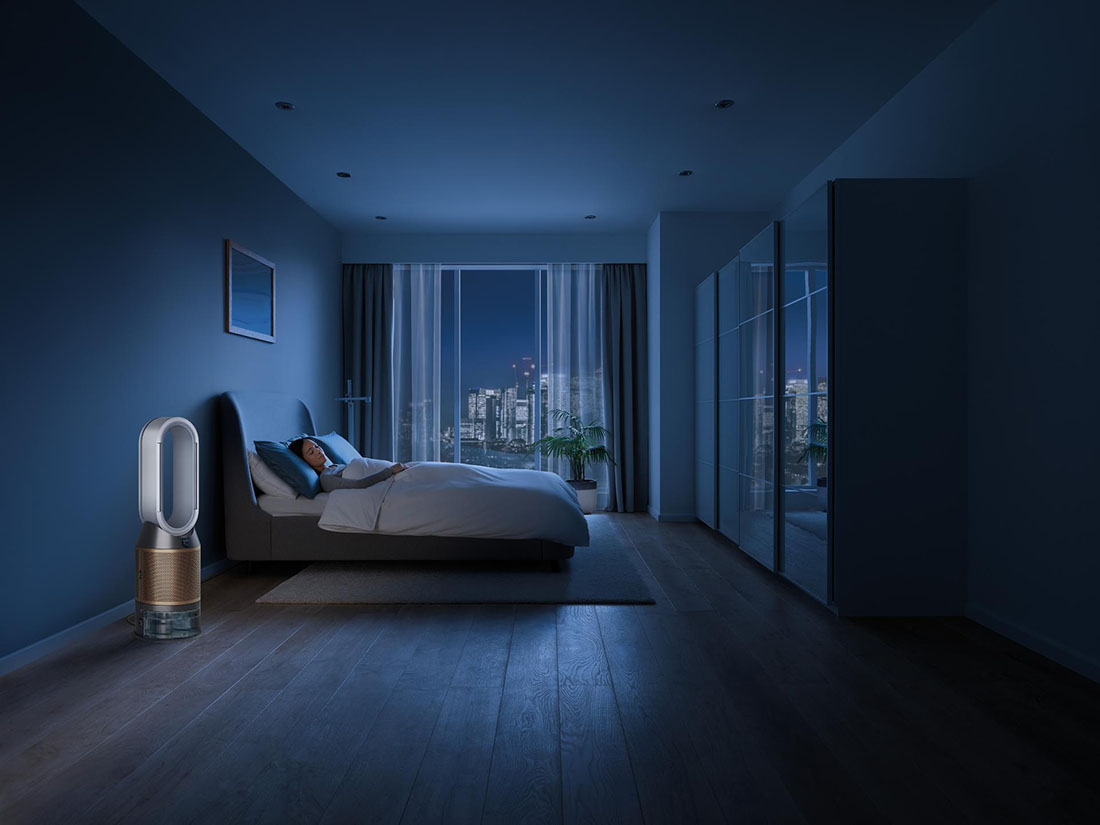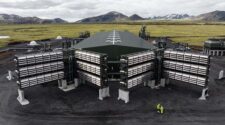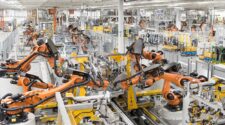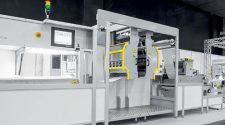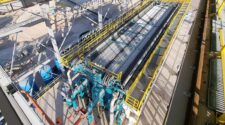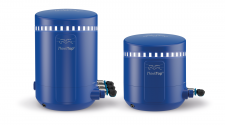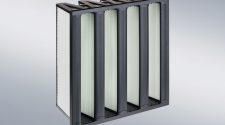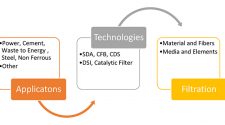The case for clean air has never been clearer
There has probably been more discussed about airborne particles in the last two years than in the twenty years before, and for understandable reasons.
The dangers to health of airborne viruses and other contaminants, however, were known long before the
COVID-19 pandemic, as was the fact that the quality of indoor air also has a direct influence on both the cognitive performance and well-being of people. HVAC systems and open windows have traditionally been the way to deal with this problem. Now, however, attitudes are changing, which is hardly surprising, given the fact that some 127 billion personal air filters – in the form of protective facemasks – were consumed monthly when the COVID-19 pandemic was at its height.
Challenge
In March 2022, the Biden Administration and the U.S. Environmental Protection Agency (EPA) launched the Clean Air in Buildings Challenge, a call to action and a set of guiding principles and best practices to assist building owners and operators in reducing risks, highlighting a range of resources which are available for improving ventilation and indoor air quality.
The four key actions outlined in the Clean Air in Buildings Challenge cover implementing a clean indoor air action plan, optimizing fresh air ventilation and enhancing air filtration and cleaning, in addition to providing guidance for community engagement, communication and education.
Funding packages are being made available for projects by the American Rescue Plan and Bipartisan Infrastructure Law.
Advanced designs for new homes are starting to add a mechanical feature that brings outdoor air into the home through the HVAC system. Some of these designs include energy-efficient heat recovery ventilators to mitigate the cost of cooling and heating this air.
Assessments
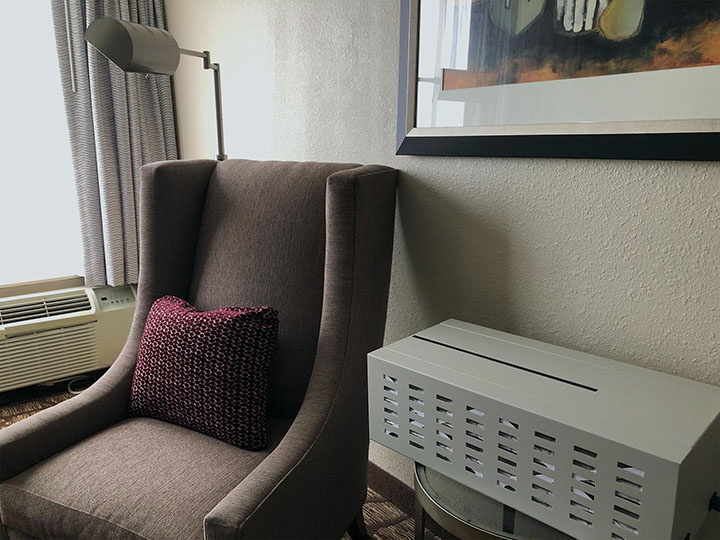
Air Cleaners Inc., of Concord, New Hampshire, has assisted many owners of commercial buildings, schools and hospitals to meet the EPA’s guidelines and the national Ventilation for Acceptable Indoor Air Quality standard of the American Society of Heating, Refrigerating and Air-Conditioning Engineers (ASHRAE/ANSI 62.1 2019) and advises that the first step in implementing a project is in carrying out a full building assessment.
“All buildings are different and it’s important to know where the air is coming in and out, as well as if there is an HVAC system, or additionally steam or hydronic heat,” says the company’s CEO Paul Bemis. “If an HVAC system exists, it is then necessary to determine the clean air change rate (ACH) for each room.”
The ACH is the measure of air volume added to or removed from a space in one hour divided by the volume of the space, which is measured using velometers or capture hoods.
The measurement is taken in cubic feet per minute (CFM) and converted into cubic feet per hour. Room volume is obtained by measuring and multiplying the room length by the width and the height.
“Proper ACH will filter the air and continuously mix it with fresh outside air into the room,” Bemis explains. “For example, if a room has ten air changes, the stale air in the room is being partially diluted with fresh outside air ten times an hour, but it must be clean fresh air. HVAC systems are only as good as their filters and were historically designed for thermal comfort and humidity control, not pathogen control, so don’t always use good filters.”
The same ACH formula calculates outside air changes per hour, with the supply CFM (or exhaust) replaced with the outside air CFM.
The outside air CFM is measured directly at the HVAC unit and calculated as a percent of the total supply air. If a unit’s total CFM is 15,000, and the outside air CFM is 5,000, for example, then the unit is taking in 30% outside air.
Testing, adjusting and balancing
Testing, adjusting, and balancing (TAB) can significantly help optimize a system by verifying and setting the correct airflow quantities needed to meet the room air changes per requirement. Additionally, a TAB technician can often verify and adjust outside airflows if the system allows. Finally, air balancing proportions the airflow more evenly throughout a room, which significantly helps eliminate pockets of stagnant air.
TAB is typically only performed once at the time of construction, but it is essential
to re-balance systems every few years. Unit performance degrades over time and many times, dampers are adjusted for a specific occupant, throwing the entire system out of balance. Electronic flow devices and outside airflow stations also go out of calibration over time.
ASHRAE recommends upgrading to a MERV 13 filter or higher, if the HVAC system can support it. Not all HVAC systems can handle the additional restrictions higher-quality filters bring. Arbitrarily installing higher MERV filters without a TAB technician’s analysis could decrease the heating and cooling effectiveness of a system.
A TAB technician can measure airflows and static pressures and evaluate if an HVAC can be adjusted to overcome the additional restrictions that a MERV 13 filter will add.
Most residential forced air-heating systems and air-conditioning systems do not bring outdoor air into the house mechanically, and infiltration and natural ventilation are relied upon to bring outdoor air into the home. Advanced designs for new homes are starting to add a mechanical feature that brings outdoor air into the home through the HVAC system. Some of these designs include energy-efficient heat recovery ventilators to mitigate the cost of cooling and heating this air.
Portables
Additional portable air cleaners can further assist in projects and the Clean Air Curtain developed by Air Cleaners is a high-velocity clean air plume based on a HEPA Filter that captures 99.995% of all particles that pass through it, including COVID-19. It can also be combined with optional ultra-violet germicidal irradiation (UV-C UVGI), which kills all captured virus particles within seconds.
The unit rapidly and uniformly cleans the air in a room, leaving no lingering clouds of noxious particles or aerosols, and protects against person-to-person infections by pushing air up and away instead of sideways or downwards.
Formaldehyde
Dyson, the well-known company founded by inventor James Dyson, has developed a range of advanced air purifiers and at the end of 2021 introduced a purifying humidifier that is specifically engineered to sense and destroy potentially harmful formaldehyde.
Sources of formaldehyde inside the home include pressed wood products, cleaning agents, carpets and DIY products such as paint, wallpapers and varnishes. Being 500 times smaller than 0.1 micron particles, formaldehyde is particularly difficult to capture. When left undetected, it can lead to prolonged exposure due to the continuous release of airborne chemicals, known as off-gassing. This can be exacerbated by modern, well-sealed homes as pollutants become trapped inside and are unable to escape. Dyson’s selective catalytic oxidization (SCO) filter continuously destroys formaldehyde at a molecular level.
“The off-gassing tendency of formaldehyde means that it can build up within the home and go undetected for years, while humidifiers without sufficient water treatment can project polluted water droplets into the air,” explains Alex Knox, the company’s vice-president of environmental care. “Dyson has engineered a machine that tackles both of these problems, providing precise sensing and continuous destruction of formaldehyde, whilst hygienically humidifying for cleaner air.”
HEPA
The Dyson Purifier Humidify+Cool Formaldehyde combines Dyson’s latest solid-state formaldehyde sensor and full-machine H13 HEPA filtration with hygienic humidification capabilities. It will automatically purify, precisely sensing and capturing pollutants, while using UV-C technology to remove 99.9% of bacteria in water.
While some other gel-based formaldehyde sensors can deteriorate overtime and are easily confused with other VOCs (volatile organic compounds) pollution, the solid-state formaldehyde sensor works alongside a unique algorithm to precisely monitor formaldehyde levels.
Sealing
The company observes that while many purifiers claim HEPA filtration, if they are not adequately sealed, indoor pollutants can bypass the filter and escape. In addition, modern air conditioning and central heating can cause indoor air to dry out. Humidifiers are a well-established solution to dry air in the home, but dirty reservoirs and filters in humidifiers can quickly breed bacteria and mold. In some humidifiers, this can then be carried in the water droplets of mist or steam released into the air.
Dyson engineers have re-engineered the machine airflow pathways to achieve fully-sealed HEPA 13 standard filtration – not only ensuring that no air bypasses the filter, but blocking any potential leak points through which dirty air might enter the airflow. The filter system has been proven to capture H1N1 influenza virus and 99.97% of particles as small as 0.3 microns such as allergens, bacteria, pollen and mold spores.
The unit also uses UV-C technology to inhibit bacteria growth, destroying 99.9% of bacteria in the water. Dyson engineers developed a highly reflective PTFE tube through which UV-C light is reflected down its length, ensuring that bacteria are exposed to the UV-C rays multiple times rather than just once, to ensure their destruction. The machine hygienically humidifies with treated water vapor, rather than droplets, and provides up to 36 hours of hygienic humidification from a five-liter water tank.
Dyson Zone
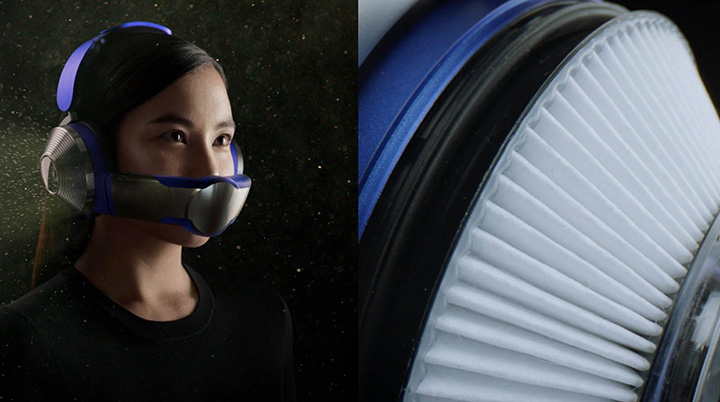
Later in 2022, Dyson is also planning to launch a new wearable product for those concerned with – or maybe even a little paranoid about – the many dangers that lurk in the air outdoors.
The result of over a decade of air quality research and development, Dyson Zone air-purifying headphones are designed to simultaneously tackle the urban issues of air quality and noise pollution.
The compressors in each earcup draw air through the dual-layer filters and project two streams of purified air to the wearer’s nose and mouth, channeled through the non-contact visor. Sculpted returns on the visor ensure the purified airflow is kept near to the nose and mouth and diluted as little as possible by external crosswinds. The Dyson Zone delivers rich, immersive audio and relief from unwanted city noise thanks to advanced active noise cancelling (ANC), low distortion and a neutral frequency response, to faithfully replicate music or audio as the creator intended.
Originally a somewhat impractical snorkel-like clean air mouthpiece paired with a backpack to hold the motor and inner workings, the Dyson Zone air-purifying headphones evolved dramatically over their six years in development. More than 500 prototypes saw one motor initially placed at the nape become two compressors, one in each ear-cup, and the evolution of the snorkel mouthpiece into an effective, contact-free visor that delivers clean air without full-face contact – a brand-new clean air delivery mechanism.
Michelangelo frescoes

In addition to protecting people, sophisticated air filtration systems are also often required to protect objects – an extreme being the delicate frescoes of Michelangelo in the Vatican’s Sistine Chapel.
Originally painted in 1512, the frescoes have been exposed to a multitude of airborne pollutants for five centuries, resulting in layers of grime. After extensive restoration work, an air filtration system was required to prevent further deterioration by removing all contaminants from the air inside the chapel while not detracting from the experience of millions of visitors.
Engineers and consultants worked closely over a two-year period to design, manufacture and install the state-of-the-art environmental control system housed in a separate building. The chapel’s more than two million annual visitors are never aware of the precise environmental controls in place.
The air is exhausted through the chapel’s floor and re-circulated through the HVAC unit and a gas-phase air filtration system with media supplied by Purafil, a member of the Filtration Group, based in Doraville, Georgia, via which gaseous contaminants are permanently removed.
The system relies on Purafil Select media, an activated alumina-based substrate. Alumina has a higher surface area compared to common substrates such as zeolite or silica gel, allowing more of the active ingredient – potassium permanganate – to react with and trap contaminants.
Purafil Select media removes gaseous contaminants through chemisorption, an irreversible chemical reaction process. The gases are absorbed and oxidized to form non-corrosive solids, which remain on the media pellet.
The air is channeled up the chapel’s outside wall and distributed to individual diffusers concealed in the base of each of its six south-facing windows. A low-velocity flow of purified air is directed over the surface of the frescoes, while a slightly higher-velocity flow “showers” visitors.
The system works successfully behind the scenes, silently preserving Michelangelo’s artwork so it can continue to inspire the millions who visit the Sistine Chapel each year.


